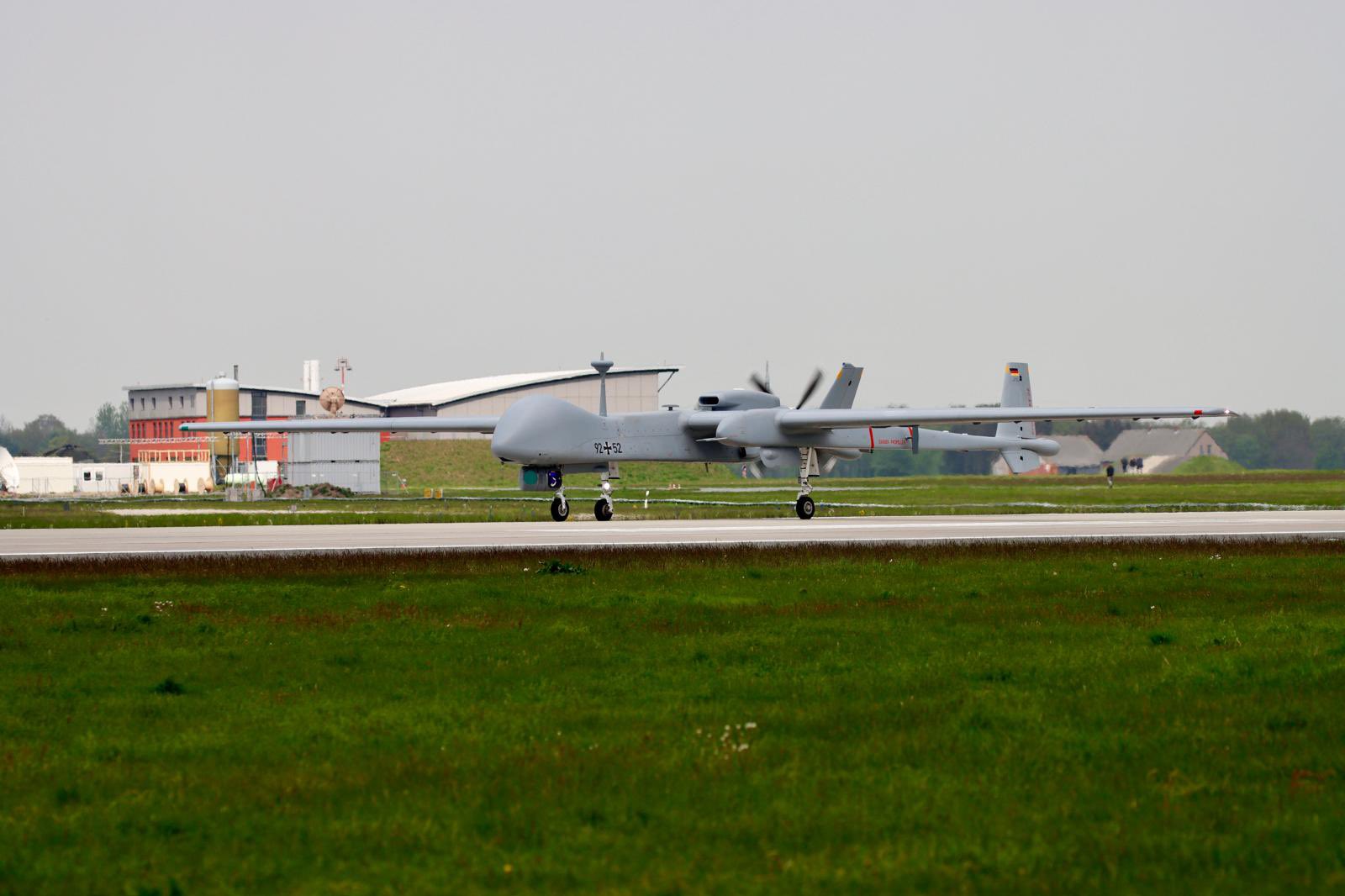The German Air Force (Luftwaffe) has announced that its Israeli-made HERON-TP Unmanned Aircraft System (UAS), manufactured by the Israel Aerospace Industries, are ready and authorized for operational use within Germany’s borders, and flights will commence in mid-May. The German Air Force announcement confirms that the airworthiness certificate was issued by the Federal Aviation Office in Kiel on May 2nd, and that the operational approval for the UAVs is valid globally. Flights will begin in May at the Luftwaffe base in Jagel in northern Germany. At the end of 2022, the Israeli-made Unmanned Aircraft Systems received approval from the German Military Aviation Authority, and since then have been operated by German teams from a base in Israel. German Air Force personnel have engaged in joint training initiatives alongside their Israeli counterparts at an Israeli Air Force base.
On April 6, 2022, the German government overcame a two-year-long debate to acquire and arm Heron-TP drones, in response to the invasion of Ukraine and the massive use of drones in the conflict. The new German coalition decided to budget 152 million euros for the purchase of 140 missiles intended to equip these drones, leased from Israel Aerospace Industries (IAI). The lower house of parliament’s defense committee approved the leasing and arming of the Israeli MALE drones, with an order comprising 60 training missiles and 80 missiles for potential combat use. The Heron TP is intended to bridge the gap between the retirement of the earlier Heron 1 Unmanned Aircraft Systems and the introduction of the new European medium-altitude long-endurance UAS known as Eurodrone, with Airbus Defence and Space operating five air vehicles out to 2027.

The IAI Heron (Machatz-1) is a medium-altitude long-endurance unmanned aerial vehicle (UAV) developed by the Malat (UAV) division of Israel Aerospace Industries. An advanced version, the Heron TP, is also known as the IAI Eitan. The IAI Heron TP is a multi-role, advanced, long range Medium Altitude Long Endurance (MALE) Unmanned Aerial System (UAS) for strategic missions. It is equipped with automatic taxi-takeoff and landing systems (ATOL), satellite communication (SATCOM) for extended range, fully redundant avionics and more. The Heron TP was designed as a multi-mission platform to address local and international customers’ needs and to perform a variety of strategic missions, including intelligence gathering, surveillance, target acquisition and reconnaissance, using various payloads, with a high level of reliability.
The Heron TP is powered by a 1,200 hp PT6 Turbo Prop engine, offering the capability to remain airborne for over 30 hours. Operating at altitudes exceeding 45,000 ft and covering distances beyond 1,000 km due to its Beyond Line of Sight (BLOS) capabilities, it is ideal for missions spanning large areas and can reach a maximum speed of 407 km/h. The Heron TP is characterized by its maximum take-off weight of 5,670 kg, a maximum payload weight of 2,700 kg, an overall length of 14 m, and a wingspan of 26 m. The Heron TP offers flexibility in terms of payload integration and can be equipped with a diverse array of payloads, including an HD Electro-Optical Payload, Synthetic Aperture Radar (SAR), Communications Intelligence (COMINT), Electronic Support Measures (ESM), and more. The drone features an Automatic Taxi-Takeoff and Landing (ATOL) system, the inclusion of triple redundant avionics, satellite communication (SATCOM) for extended operational range, and supports data links for both Line-of-Sight (LOS) and Beyond Line-of-Sight (BLOS) missions.
Rolltest bestanden: Unsere neue Drohne GHTP hat die nächste Hürde genommen?? Das #TaktLwG51 „Immelmann“ bereitet sich auf den ersten Flug vor… Rollen können wir schon mal??.@BaainBw pic.twitter.com/4Xlnogj1Dn
— Team Luftwaffe (@Team_Luftwaffe) May 3, 2024















